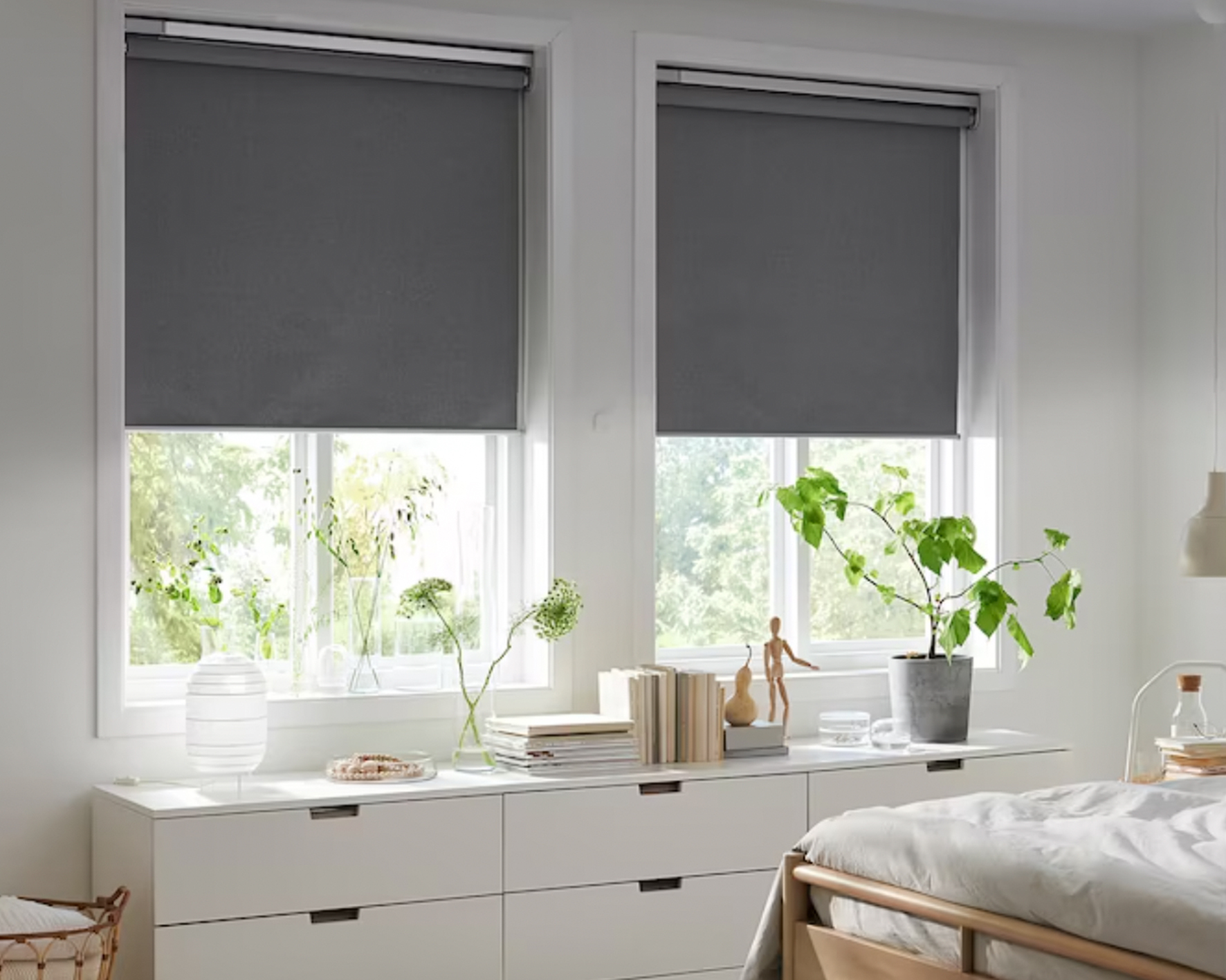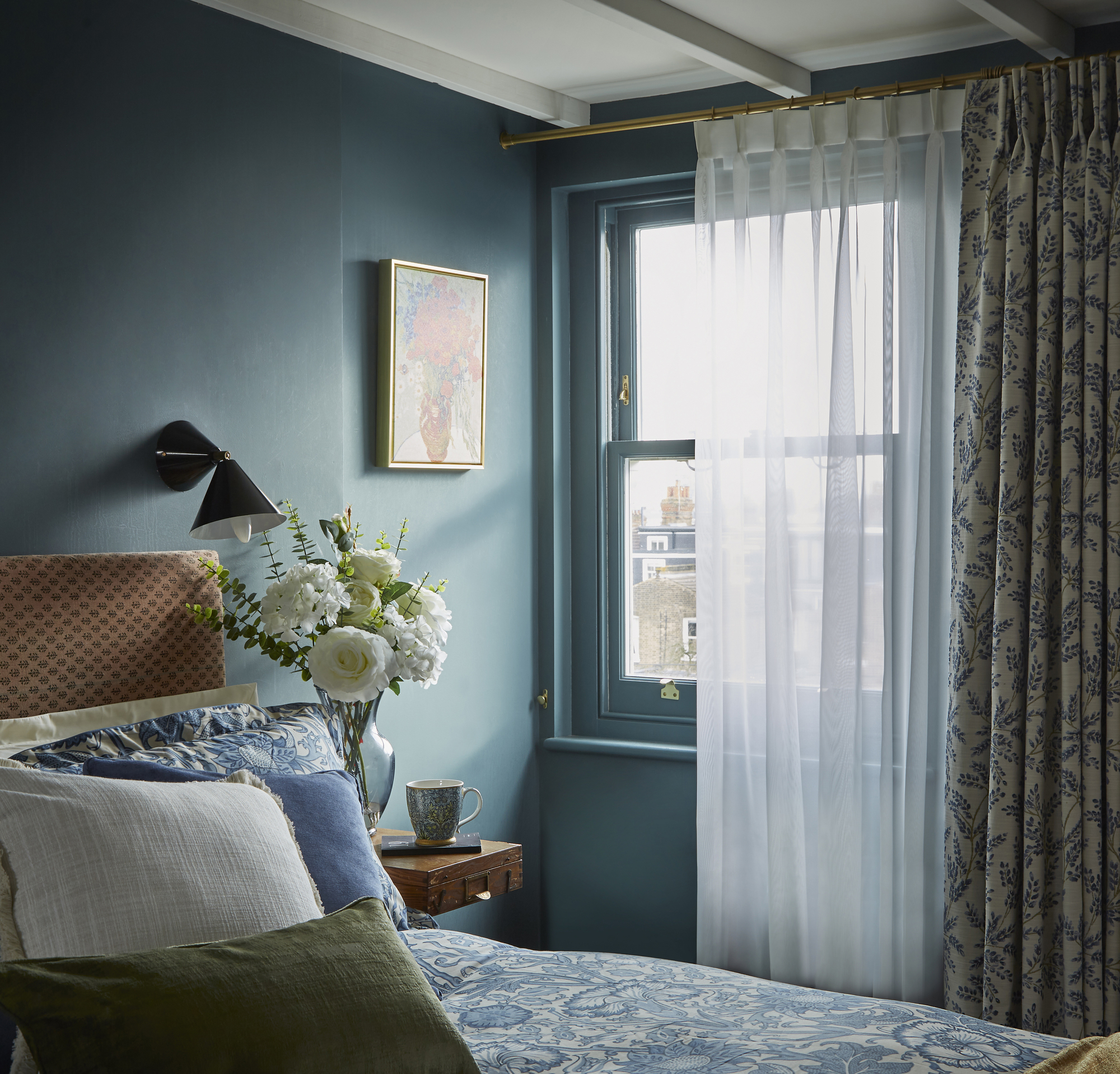Your Blackout Blinds and Curtains Might Actually Be Making Your Bedroom Hotter — Here’s What You Should Have Chosen for Your Windows Instead
Try these window treatments to cool down your bedroom for a better night’s sleep, say the experts


When trying to achieve the perfect night’s sleep, blackout blinds are most people’s go-to. But while they are great at shutting out the light, they may be inadvertently heating up your bedroom beyond comfort.
As temperatures rise during the summer months, homes need to strike the balance between energy efficiency and cooling. Some blackout blinds, made from dense, synthetic materials and especially when dark colored, trap heat. When left closed during the day, they absorb sunlight and radiate warmth back into the room — exactly what you don’t want.
So, what’s the solution? Well, it's not the case for every blackout blind. Blinds in light colors, and those with insulation built in will keep heat out. Otherwise, there are alternative options for a well-dressed window that can actually regulate temperature, and is a great way to cool down a room and make it more comfortable. From breathable fabrics to clever designs that reflect rather than absorb sunlight, here are five better alternatives to traditional blackout blinds for those looking to beat the bedroom heat.
1. Thermal or Solar Reflective Roller Shades

Blackout blinds can be an effective choice still, but they'll need a specific backing that resists absorbing heat. "Solar reflective roller shades are designed with a metallic or light-colored backing that reflects sunlight away from the window before it has a chance to heat up your room," says interior designer Joshua Smith. "Some high-tech options, such as the Persilux solar roller shades from Amazon, feature a dual-layer design: dark on the inside to reduce glare, light on the outside to reflect heat."
They’re modern, and come in a variety of transparency levels, so you can still enjoy a softly filtered daylight without the glare — or the heat. They don't always have the same aesthetic appeal as your usual blackout blinds, but they will roll up neatly when not in use, giving your space a clean, clutter-free finish.
2. Sheer Linen Curtains With UV Backing

Linen is breathable, airy, and lightweight, which makes it a wise choice for window dressings. Unlike synthetic materials that can trap heat and moisture, linen allows air to pass through freely, helping to maintain a comfortable indoor temperature.
"The trick is layering," continues Joshua. "Use sheer linen panels with a separate UV-lined or reflective backing. These backings are often made from lightweight, fabrics that reflect sunlight back outside before it can heat up your interiors, some even come with thermal or noise-reducing benefits."
The Livingetc newsletters are your inside source for what’s shaping interiors now - and what’s next. Discover trend forecasts, smart style ideas, and curated shopping inspiration that brings design to life. Subscribe today and stay ahead of the curve.
An added bonus? Linen bedroom curtains are incredibly durable and actually improve with time. It becomes softer and more supple with each wash.
3. White Shutters

Timeless, elegant, and incredibly effective at climate control, the white shutters, like these from Hilarys are a smart choice for heat-conscious design. Their slatted design allows for excellent airflow while controlling light. When closed, the thick wood or composite panels offer insulation, and the white color reflects sunlight rather than absorbing it.
"Unlike fabric-based window dressings, shutters don’t trap heat within layers of material," says Marie Flanigan, principal of Marie Flanigan Interiors. "Instead, they create a barrier between the sun and your interiors, preventing rooms from turning into greenhouses. They’re a bit of an investment, but their longevity and performance make them worthwhile."
4. Cellular Shades

Cellular, also known as honeycomb, shades are designed to trap air in distinct pockets, creating a layer of insulation at the window. This type of blind works both ways: keeping warm air in during winter and hot air out during summer.
According to Marie, you should opt for light-colored cellular shades to maximize their cooling effect. Some models offer top-down/bottom-up functionality, allowing you to adjust privacy and light levels without completely covering your window—ideal for letting in a breeze while blocking direct sun.
Importantly, cellular shades work well both on their own and layered with other window treatments. You might combine them with lightweight curtains or drapes to soften the look while still benefiting from the functional performance of the honeycomb structure underneath.
5. Bamboo or Woven Wood Blinds

Natural materials like bamboo, jute, rattan, and other woven woods have become increasingly popular in interior design due to their practicality as window treatments to cool down rooms. Unlike heavy synthetic window treatments, these natural and chik blinds are inherently breathable.
What makes these blinds particularly appealing in hot weather is their ability to diffuse rather than trap heat. While blackout blinds create a sealed environment that holds warm air in, woven wood shades, such as the bamboo roller blind from Wayfair, allow warm air to circulate out, especially when windows are slightly open. This breathability makes them ideal for bedrooms where airflow is a priority.
To enhance their performance, choose versions with a light-filtering liner. These liners can deflect some of the heat while maintaining the texture and visual interest of the natural fibers. Bamboo blinds are particularly effective in south-facing rooms that receive intense afternoon sun.
When choosing which window treatments to use in your bedroom, consider combining blackout curtains in conjunction with another treatment, if total darkness is crucial for your sleep quality. The key is layering for function and flexibility: block light at night, but allow airflow and solar deflection during the day.
Relying solely on blackout blinds may be doing more harm than good when it comes to summer sleep. With smarter, more breathable materials and thoughtful window treatments, you can create a bedroom that’s not only stylish and serene — but refreshingly cool, too.

Seraphina is a contributing editor at Livingetc, writing Advice features on design, renovation and organisation. Seraphina is a qualified Interior Designer from KLC School of Design having worked at London-based interior design agencies Anouska Hempel and ND Studios. Seraphina has also completed her MA degree in Magazine Journalism at City, University of London, with previous experience including writing for Homes & Gardens, Women's Health, Food & Travel and Fabulous Magazine.